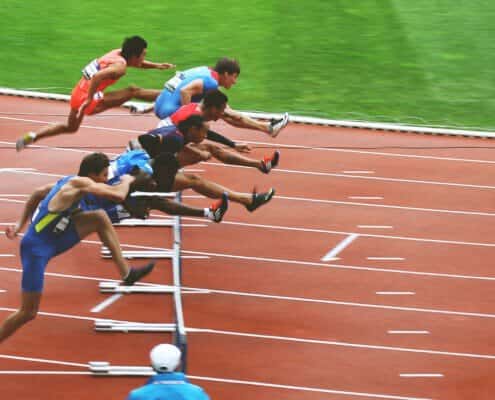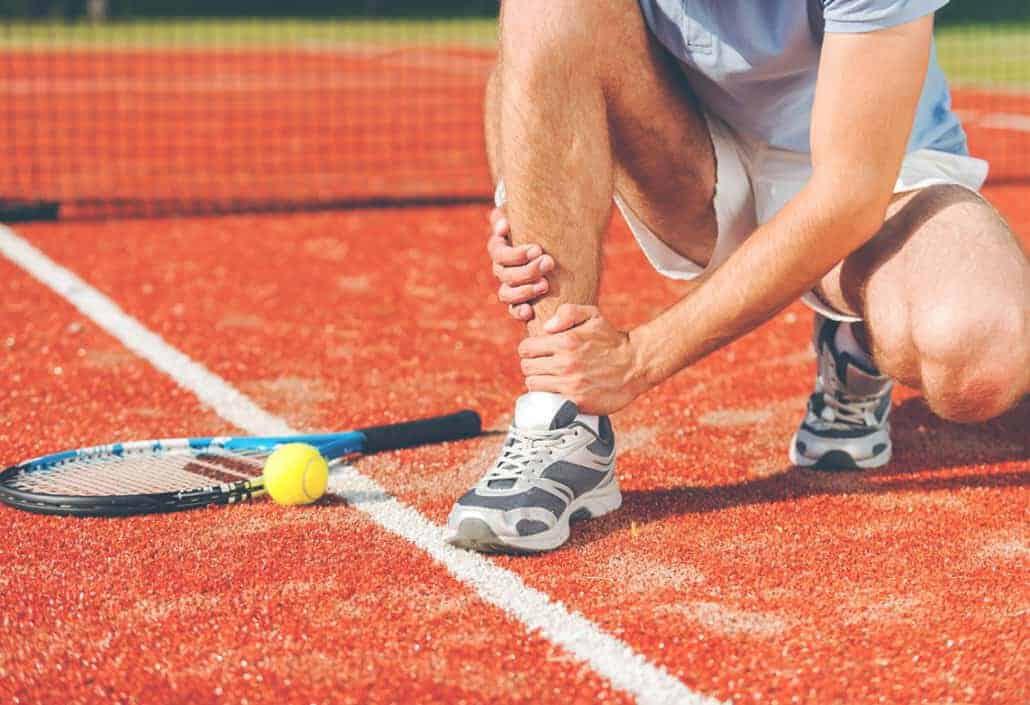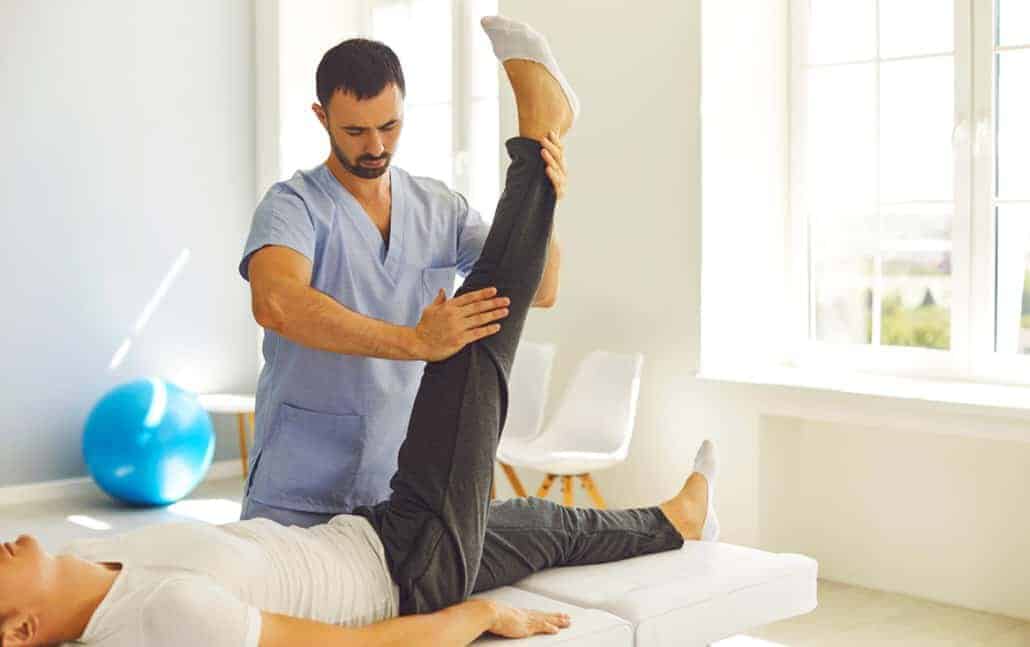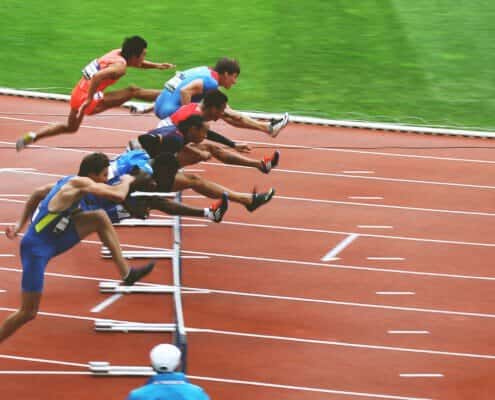
Sports and athletics can be a great source of joy and fitness and it comes with its own set of risks. Sports injuries like sprain, concussions, and fractures are common injuries to athletes and can be a great hurdle for their day-to-day activities.
Some injuries caused by accidents are less severe, whereas, others can be hazardous for the athletes. One cannot prevent the injuries, but with the help of proper guidance from your family doctor, enough rest for the body, and sports medicines, one can take care of his or her body and get rid of the pain caused by the injury.
Getting To Know The Sports Injuries
Below are some common sports injuries:
Achilles Tendon Injury
Achilles tendon is a corded tissue, thick in nature, which is responsible for connecting your heel to the calf muscle. One can walk with the help of the Achilles tendon. Also, it is the largest tendon of your body. Achilles tendinitis is common in sports which consists of running and hasty movements. Not wearing the appropriate shoes or lack of workout before the sports can result in Achilles tendinitis. If one finds their calf or heel hurting, while they run or walk, then it might be a sign of Achilles tendinitis. The affected area might feel warm or display some swelling as a symptom. These kinds of injuries can be chronic or acute.
Broken Bones
A force from a sudden blow to your bones can lead to a broken bone. This condition is also known as a fractured bone. Any sports can be responsible for this condition. Its symptoms are numbness, swelling, sudden pain, and tenderness on the affected area and you must not ignore any one of them. These are the acute kinds of injuries, where one might notice the inappropriately looking affected area and feel difficulty in moving it.
Jumper’s Knee
Jumper’s knee is also called patellar tendinitis. If there is inflammation in the tissues, connecting your thigh muscles and your kneecap to the shin bone, it might be a sign of the jumper’s knee. This kind of injury is usually triggered by sports that include repetitive jumping. People who are into sports like volleyball or basketball are at the risk of jumper’s knees. Overweight people, who prefer to play on the rough surface are also likely to suffer from this condition as well. Severe knee pain felt below the kneecap is one of the most common symptoms of a jumper’s knee. One might feel stiffness or weakness in the knees while climbing stairs, kneeling, or jumping. These kinds of conditions are acute as well as chronic.
Dislocations
It is somewhat tough to differentiate between a dislocation and a broken bone. Enough force, falling, or hitting can move the ends of the bones out of their exact position, resulting in a dislocation. Sports such as soccer, basketball, and football provide substantial contact between athletes, putting them at the risk of causing a dislocation. These kinds of injuries are acute too. A sportsperson might not be able to move the affected area or can find swelling in that region. Severe pain is the common symptom of this condition.
Shin Splints
Shin is the area that happens to be present below your knee and in the front side of your leg. Inflammation around your muscles and tendons can lead to the condition called shin splints. Basketball players and runners are commonly impacted by this condition. Severe pain in your shin is not to be ignored as it can be a sign of shin splints. Usually, the pain passes away with appropriate care and adequate rest. These kinds of injuries to athletes are acute in most cases.
Little League Elbow
This condition is responsible for affecting your elbow’s growth plate. It occurs mainly among adolescents. Baseball players are more likely to suffer from conditions like this. If you are into sports that involve the repetitive throwing of the ball, then this can cause chronic inflammation in your growth plate. There is a similar condition among adults which is also known as ulnar collateral ligament injury. Each throw can feel you up with bouts of severe pain as the inside part of your elbow is severely affected by it. This kind of condition is chronic.
Rotator Cuff Injuries
The rotator cuff is a vital part of your shoulder as it is responsible for the movements of your shoulder and keeping it stable. This kind of issue is common among sports involving repetitive actions, such as tennis, swimming, or baseball. The symptoms of this condition are pain while lifting your arm, swollen shoulder, and pain while reaching for the back. This kind of injury is chronic and must be taken into consideration.
Runner’s Knee
It’s another kind of injury that comes in the repetitive- motion category. Runner’s knee is common among the runners. People who are into biking, excessive walking, or knee bending are also among the sufferers. A hard hit to the knee or any trauma can lead to the runner’s knee. A swollen knee or pain behind the kneecap (while bending your knees) are some of the most common symptoms related to this problem. Patients often sense a slight grinding sensation while bending the knees. These kinds of injuries to athletes are both acute and chronic.

Sprains
It is one of the most common sports injuries to athletes. A tear of a ligament or a stretch near a knee joint, ankle joint, or wrist joint is called a sprain. Twisting motions or a sudden fall is responsible for the sprains. A stretched ligament can contribute to mild pain, whereas, a torn ligament can lead to severe pain. Bruising and swelling are among the most common symptoms of a sprain. It’s extremely painful to apply pressure to the joints when suffering from this condition. These kinds of injuries are acute.
Tennis Elbow
Overusing the elbow might lead to a devastatingly painful condition known as a tennis elbow. Golfers and tennis players are more likely to get affected by this condition. A tennis elbow results in the pain in the outer part of your elbow. Inflamed tendons are responsible for this kind of pain. Weakness while gripping any object is considered to be a major symptom of this condition. These kinds of injuries to athletes are chronic.
Strains
A sprain and a strain are slightly different from each other. A sprain is responsible for the pain in the ligament, whereas, a strain is responsible for the pain in a muscle. Overextending your muscle tissue can result in a tear or stretch in your muscles. Repetitive actions can cause mild strains and athletes who are into sports that involve lots of jumping, lifting, or running are prone to acute strains. Quickly changing your direction is also among the major causes of this condition. A person is more susceptible to strains during cold weather. Sudden severe pain and abstained motions of the affected area are among the major symptoms of it. In some cases, patients may witness swelling and bruising. These kinds of injuries can be acute as well as chronic.
Tips To Prevent The Sport Injuries
Here are some preventative measures one can look for while dealing with sports injuries:
- Do a light warm-up before getting into the sports. A little stretching exercise might help as well.
- Do wear appropriate protective gear. Make sure the gears are in fine condition.
- Drink a lot of water. Keeping yourself hydrated while playing a sport might prove very beneficial for your stamina, blood pressure, and overall body. Drink a little before your activity, take a break every 15-20 minutes during the sports and have plenty of water as you finish your sport, depending on your perspiration level.
Tips For Treating The Most Common Sports Injuries
- It is more appropriate to stop immediately when you have injured yourself while playing as further activity can prove devastating for you.
- For knees, legs, and ankles, crutches might help.
- It is vital to take enough rest for better recovery. It can be a couple of day’s rest or rest for weeks, depending on the severity of your condition.
- It’s better to avoid the heat during these kinds of injuries as it can worsen the condition by encouraging inflammation and swelling.
- Applying ice on the injury can do wonders as it can help in dealing with the pain and swelling.
- Compression with the help of an elastic bandage can get rid of swelling.
- You can also elevate the injured area to some level (higher than the heart). This can help to get rid of the swelling.
When To Seek Medical Help
Below are some signs that one must look for in order to avoid further damage to the body. It’s time to seek immediate medical help if you witness any of these signs.
- Crooked joints or abnormal bone movements
- In case of mild bruising
- Immoderate swelling
- Lifting your limb gets devastatingly painful
- A substantial change in your skin color

Final Words
When it comes to dealing with the pain of sports injury, only toughness won’t do. You have to be a little smart to combat it effectively. It’s better to play with caution and be well-guarded with preventive measures. One must not ignore the signs such as bruising, mild pain, or swelling in the affected areas as it can get worse with time and lead to even more serious problems. It’s more appropriate to seek immediate help at these times from your nearest pain experts. Scheduling an appointment with a renowned pain doctor or following the steps mentioned above can help you to tackle these conditions with a slight amount of ease. No matter what sports you are into, ensure to take proper care of your body and play safely.




